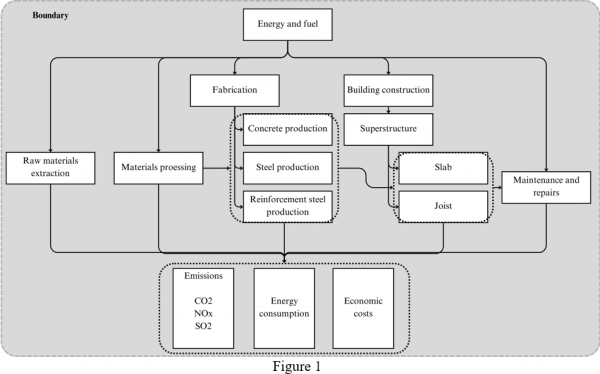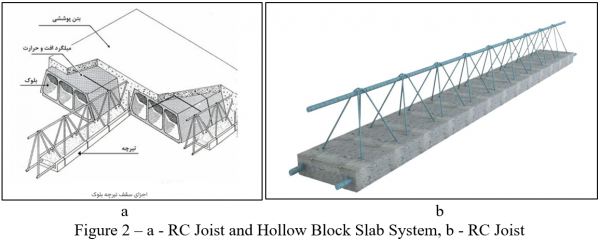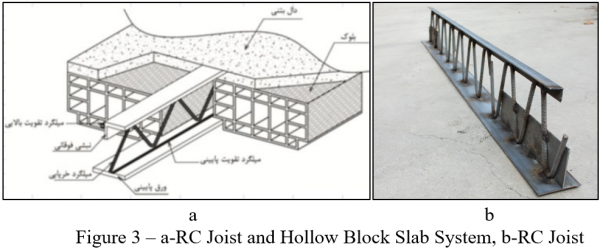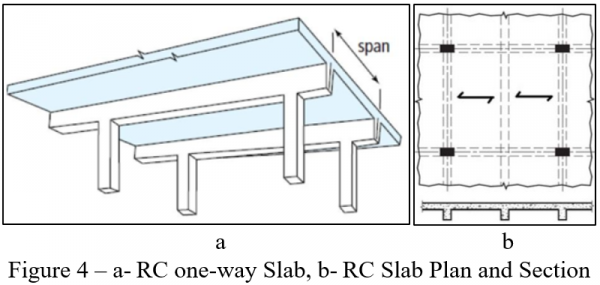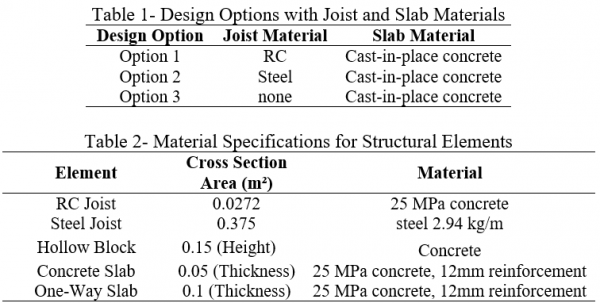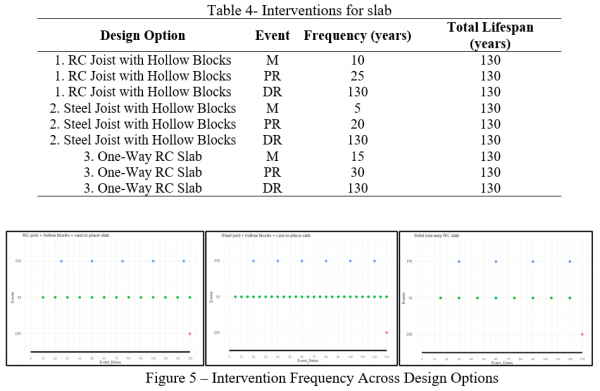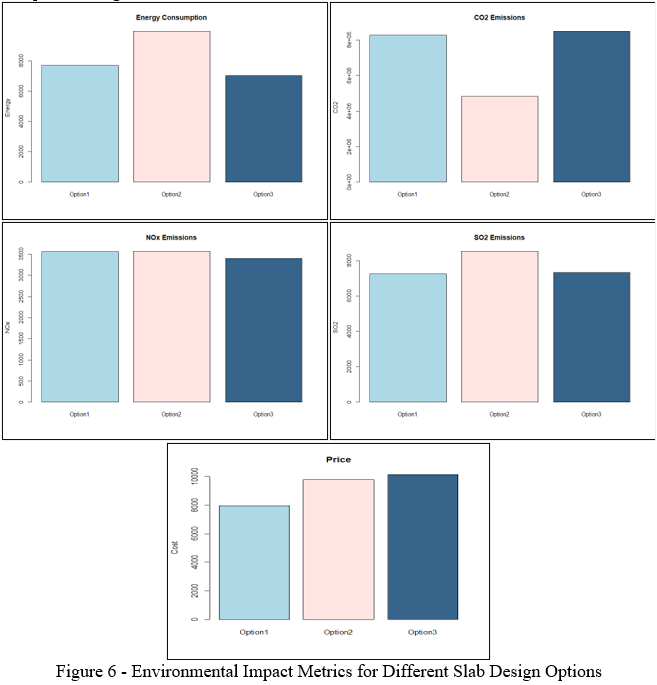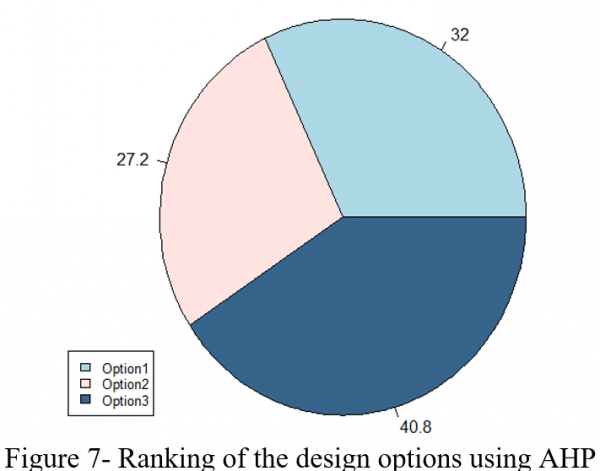Introduction
This assignment focuses on an LCA of the slab system in a reinforced concrete (RC) one-story residential building. As a key structural component, the slab impacts performance, resource use, and environmental footprint. By analyzing its lifecycle and exploring alternatives, the study aims to identify the most sustainable solution. Integrating MCDA ensures a balanced evaluation of environmental, economic, and functional factors.
Goal and Scope Definition
The primary goal of this life-cycle assessment is to evaluate the environmental and economic impacts of three design options for the slab subsystem in an RC one-story residential building. Specifically, the study seeks to identify the most sustainable design alternative by assessing energy consumption, costs, and greenhouse gas emissions across the slab’s lifespan (Figure 1).
Scope and Boundaries
The scope of the LCA includes the following stages:
- Material Extraction and Production: Evaluation of raw material sourcing and the energy and the cost required for material processing.
- Construction: Analysis of the energy, cost and materials consumed during the slab’s construction.
- Operation and Maintenance: Consideration of periodic maintenance and its associated resource use.
- End-of-Life: Assessment of decommissioning, including demolition and waste management.
Slab Design Options
Option 1: RC Joist with Hollow Blocks
Option 2: Steel Joist with Hollow Blocks
Option 3: One-Way RC Slab
Life-Cycle Inventory
Table 1 presents three design options with varying material strategies for the joists and slab. Table 2 details the material specifications for the structural elements.
Interventions and Lifespan Analysis
Based on research by Ianchenko et al. (2020), the average estimated lifespan of residential buildings is approximately 130 years, which we have adopted for this analysis. For a slab in a building with a lifespan of 130 years, it is assumed that typical interventions include regular maintenance, periodic repairs, and end-of-life disposal. Regular maintenance addresses minor issues like surface wear and prevents deterioration, while periodic repairs are necessary to rectify structural damages caused by factors such as environmental exposure or load variations. End-of-life disposal is included to account for the replacement or decommissioning of the slab at the end of its lifecycle.
Interventions for Building Slab:
- Maintenance (M): Routine inspections and minor repairs to maintain structural integrity.
- Partial Repairs (PR): Reapplying surface protection or addressing localized damage.
- End-of-Life Disposal (DR): Demolition and recycling/disposal at the end of the 130-year lifespan.
Table 4 provides a summary of the intervention frequencies for each design option, and Figure 5 visually represents this information.
life cycle cost analysis
Over a 130-year lifespan, the average number of interventions varies among slab design options due to differing maintenance needs: the One-Way RC Slab averages 4.67 interventions, the RC Joist with Hollow Blocks 6.4, and the Steel Joist with Hollow Blocks 11.17. Hollow Blocks are excluded from this count as they serve no structural purpose. Figure 6 illustrates trade-offs between energy consumption, cost, and emissions (CO₂, NOₓ, and SO₂) across the designs. Option 2 has the highest energy use but lower CO₂ emissions and medium in cost, while Option 3 shows the opposite trend, reflecting the complexity of sustainability decisions. The Analytic Hierarchy Process (AHP) provides a systematic approach to weigh these criteria, enabling informed selection of the optimal design.
MCDM – Analytic hierarchy process (AHP)
ranking of the design options is illustrated in Figure 7, showing that Option 3 (One-Way RC Slab) has the highest preference, accounting for 40.8% of the total weight, indicating its superior performance across the evaluated criteria. Option 1 (RC Joist) follows with 32.0%, while Option 2 (Steel Joist) has the lowest ranking, contributing only 27.2%.
Discussion
Based on Figure 7, Option 3 stands out with a preference score of 40.8%, making it the most favorable choice. Despite being the most expensive option (Figure 6), AHP analysis reveals its superior energy efficiency and balanced emissions profile. While its higher concrete use increases CO₂ emissions, its simple design minimizes energy consumption and maintenance, making it a sustainable choice. Option 2 (Steel Joist), with the lowest score of 27.2%, benefits from lower CO₂ emissions due to steel’s reduced carbon intensity (Navarro and Rubio, 2024). However, its high energy consumption and significantly higher SO₂ emissions from energy-intensive steel production outweigh this advantage, highlighting a trade-off between carbon emissions and energy/air quality impacts. Its higher cost also doesn’t make it a better option than Option 1. Option 1 (RC Joist) ranks moderately at 32.0%. While its additional concrete in the joist raises CO₂ emissions compared to Option 2, it remains the cheapest option. AHP was essential to evaluate these trade-offs. By analyzing energy consumption and emissions (CO₂, NOₓ, SO₂), the model helps practitioners prioritize sustainable designs that align with project goals and regulations.
Consequently, by providing a comprehensive analysis of environmental impacts, life-cycle costs, and maintenance requirements, the study can guide architects and engineers in selecting slab systems that balance economic and environmental priorities. It offers actionable insights for policymakers to develop regulations that promote sustainable construction practices and encourages material manufacturers to innovate more eco-friendly solutions. The findings also suggest avenues for improving the design alternatives. For the One-Way RC Slab, integrating supplementary cementitious materials or adopting advanced reinforcement strategies could reduce its material intensity and overall energy demands. For the Steel Joist system, advancements in low-carbon steel production or the use of recycled steel could significantly mitigate its environmental footprint. The RC Joist system could benefit from innovations in crack-resistant concrete or enhanced surface protection technologies to decrease maintenance demands and improve its lifecycle sustainability.
References
Ianchenko, A., Simonen, K. and Barnes, C., 2020. Residential building lifespan and community turnover. Journal of Architectural Engineering, 26(3), p.04020026. Available at: https://ascelibrary.org/doi/abs/10.1061/(ASCE)AE.1943-5568.0000401
Navarro, S. V., & Rubio, R. G., 2024. Environmental Impact of Wood, Steel, and Concrete in Residential Buildings. Available at: https://www.researchgate.net/profile/Ruben-Rubio-2/publication/387521554_Environmental_Impact_of_Wood_Steel_and_Concrete_in_Residential_Buildings/links/67729bb3fb9aff6eaaf80eba/Environmental-Impact-of-Wood-Steel-and-Concrete-in-Residential-Buildings.pdf
